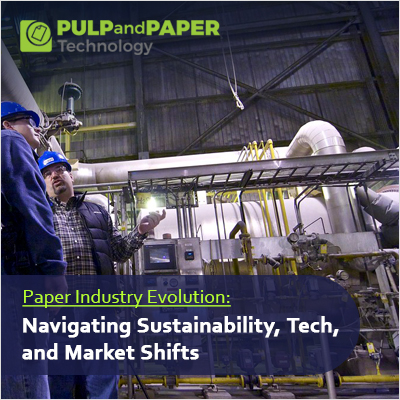Paper Industry Evolution: Navigating Sustainability, Tech, and Market Shifts

Introduction:
The paper industry, often considered a cornerstone of modern civilization, has undergone significant transformations in recent years. As we delve into the intricate web of trends and market dynamics shaping this sector, it becomes evident that the traditional image of paper manufacturing is evolving. In this exploration, we will unravel the current state of the paper industry, dissect its market dynamics, and peer into the crystal ball to discern the future trends that may redefine the landscape.
1. Sustainability Takes Center Stage:
In the backdrop of a global push towards environmental consciousness, the paper industry is no exception to the sustainability wave. Consumers are increasingly demanding eco-friendly products, prompting a paradigm shift in the manufacturing processes of paper. Traditional wood-based pulp is facing competition from alternative, sustainable sources such as bamboo and recycled materials. Additionally, the adoption of environmentally friendly practices, including energy-efficient technologies and responsible forestry management, is becoming a key criterion for industry players.
2. Digital Disruption and Paper Usage:
The rise of digitalization has cast a shadow on the demand for traditional paper products. With the prevalence of electronic communication and document storage, there has been a notable decline in paper consumption in certain sectors. However, it's important to note that the paper industry is not dwindling; it is evolving. The demand for specialty papers, packaging materials, and innovative paper-based products is on the rise, compensating for the decline in conventional paper usage.
3. The Packaging Renaissance:
One of the driving forces behind the resilience of the paper industry is the booming demand for sustainable packaging solutions. As consumers become more conscious of their environmental footprint, there is a growing preference for paper-based packaging over conventional plastics. The industry is witnessing a surge in the production of innovative, eco-friendly packaging materials, presenting a lucrative avenue for growth.
4. Technological Advancements:
The paper industry is undergoing significant transformation with the pivotal influence of technology. Automation and artificial intelligence are optimizing manufacturing processes, boosting efficiency, and lowering operational costs. Advanced technologies are also contributing to the creation of innovative paper products featuring improved characteristics like water resistance, durability, and even electronic functionalities. These advancements address current market needs while simultaneously unlocking fresh opportunities for applications across diverse industries.
5. Globalization and Market Dynamics:
The paper industry, like many others, is intricately linked to global economic trends. Fluctuations in raw material prices, trade policies, and geopolitical events can significantly impact the dynamics of the market. The industry is witnessing a shift in production centers, with emerging economies playing an increasingly significant role. This globalization of the paper industry brings both challenges and opportunities, requiring industry players to navigate a complex web of international market dynamics.
6. E-Commerce Boom and Paper Packaging:
The surge in e-commerce activities has created a surge in demand for robust and sustainable packaging materials. As consumers turn to online shopping, the need for secure and eco-friendly packaging solutions becomes paramount. The paper industry is capitalizing on this trend by developing packaging materials that not only ensure the safety of products during transit but also align with the environmental values of both businesses and consumers.
7. Circular Economy Initiatives:
Adopting the tenets of a circular economy, the paper industry is prioritizing recycling and sustainability across the entire product life cycle. Starting with the responsible acquisition of raw materials and extending to the recycling of end-of-life products, circularity is emerging as a fundamental principle in the industry. This transition not only tackles environmental issues but also cultivates a favorable image for companies dedicated to sustainable practices.
8. Changing Consumer Preferences:
Understanding and adapting to changing consumer preferences is crucial for the paper industry's future. Beyond the demand for sustainable products, consumers are also showing an increased interest in personalized and unique paper items. This has led to a surge in demand for specialty papers, customized packaging, and artisanal paper products. The industry's ability to cater to these evolving preferences will determine its success in a rapidly changing market.
9. Regulatory Landscape:
Regulations and policies play a pivotal role in shaping the paper industry. Governments worldwide are implementing measures to promote sustainable practices, restrict deforestation, and reduce carbon emissions. Industry players need to stay abreast of these regulations and proactively adopt measures to comply with environmental standards. Adherence to such standards not only ensures environmental responsibility but also aligns with the expectations of an increasingly conscientious consumer base.
10. Future Outlook:
The future of the paper industry appears dynamic and promising. While challenges such as digitalization and changing consumer behaviors persist, the industry's resilience and adaptability shine through. The continued emphasis on sustainability, technological advancements, and the exploration of new markets are expected to drive growth. As the world transitions towards a more sustainable and circular economy, the paper industry is well-positioned to play a pivotal role in providing innovative solutions that balance economic viability with environmental responsibility.
Conclusion:
In the ever-evolving landscape of the paper industry, navigating the currents of change requires a strategic approach. Sustainability, technological innovation, and a keen understanding of market dynamics will be the compass guiding industry players into the future. As consumers continue to seek products that align with their values, the paper industry's ability to adapt and innovate will determine its success in the years to come. The journey ahead promises both challenges and opportunities, and the industry is poised to script a compelling narrative that blends tradition with transformation.







